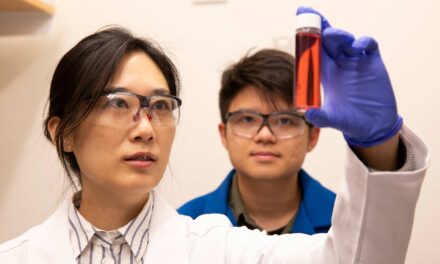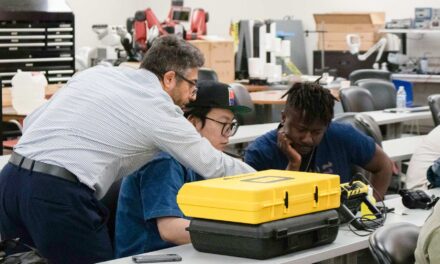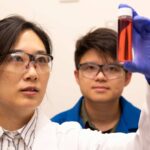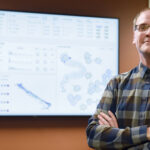
Online electrical engineering degree program offers advanced education, ease of access
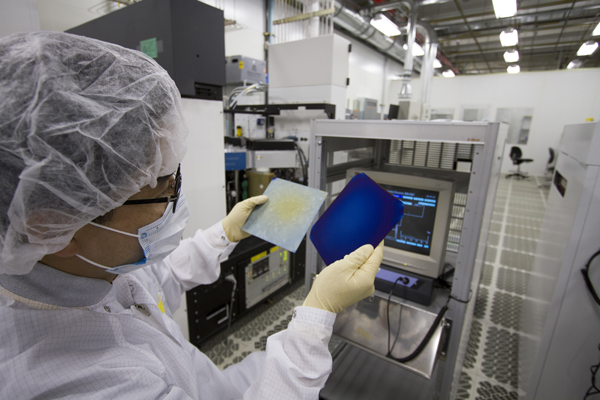
Students in ASU’s online electrical engineering program gain applied skills and hands-on experience to prepare them to advance their careers in a wide range of industries. Photo: Jessica Slater/ASU
April 10, 2013
Beginning in fall 2013, the Ira A. Fulton Schools of Engineering at Arizona State University will offer its renowned Bachelor of Science in Engineering (B.S.E.) degree program in electrical engineering in an online format.
“We want to offer an option to working professionals motivated to pursue an electrical engineering degree. It combines the convenience of an online format with interaction with our faculty, who through their dedication to teaching and innovation in research have made our electrical engineering program one of the top in the nation,” says Paul Johnson, professor and dean of the Ira A. Fulton Schools of Engineering.
Combining fundamentals with applied experience
Stephen Phillips, director of the School of Electrical, Computer and Energy Engineering, one of the Ira A. Fulton Schools of Engineering, notes that the program is designed to prepare students for the increasingly interdisciplinary nature of the electrical engineering industry.
“Our faculty members have expertise across a broad spectrum and we have strong ties to industry,” Phillips says. “Students in the program gain valuable insight into leading-edge innovation, but also the practical applications in a wide range of sectors from healthcare to energy to security.”
The 120-credit hour degree program includes core-engineering courses and a minimum of 45 upper division credit hours in specialty courses – including topics such as analog and digital circuits, electromagnetic fields, microprocessors, communications networks, solid-state electronics and electric power and energy systems.
The program’s labs incorporate practical hardware with industry-standard computer-aided design and simulation tools to give students applied, hands-on experience. “Students will initially be working with circuit design and simulation tools that are easy to grasp, but will enable them to move on to more advanced tools, such as the Xilinx ISE environment, which is heavily used in industry for advanced digital logic design,” says assistant professor Michael Goryll.
Sessions are offered in a seven-and-a-half week format and the degree program can be completed in as few as three calendar years, depending on the student’s desired course load.
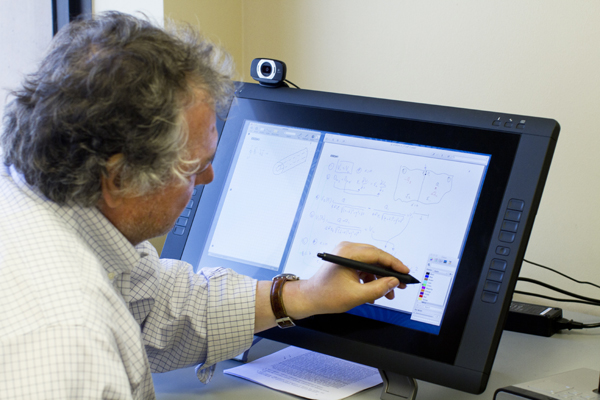
Marco Saraniti, electrical engineering professor, demonstrates how an interactive tablet enables faculty to communicate and share notes, giving online students an experience similar to meeting with instructors on campus during regular faculty office hours. Photo: Natalie Pierce/ASU
Working with leading faculty
The online format enables corporate partners to provide workforce development opportunities, and gives their employees the opportunity to bring back insights gained from interaction with faculty who are leaders in their fields. Many faculty members have received the highest recognition for their research and teaching impact, including National Academy of Engineering members, IEEE Fellows, Regents’ Professors, NSF CAREER Award winners, and winners of the Fulton Schools of Engineering Top 5% Teaching Awards.
“We are leveraging innovative learning technologies to enable students to gain the advanced skills needed in a fast-paced global economy,” says Phillips.
“It is an online class, but not a remote class,” says electrical engineering professor Marco Saraniti. “Students will have significant real-time exposure to the instructor.”
For example, Saraniti notes that office hours for both in-class and online students are implemented using an interactive display such as Skype, enabling the professor to share not only notes, but allowing the student to see exactly what the professor sees.
”Our hardware labs include kits for building circuits on breadboards and measuring the responses with computer-based instruments. Students can do the labs anywhere and at any time. Students have real-time access to teaching assistants and faculty during scheduled office hours. These labs are the same as those completed by our on-campus students,” Goryll says.
Leveraging a history of innovation in education
ASU has a long history in distance-learning programs. Thirty years ago, it offered programs to corporate sites through interactive TV networks and satellites. In 2002, it first offered an online engineering graduate degree program. The programs have since expanded to include 60 undergraduate and graduate degree programs entirely online.
In recent rankings released by U.S. News & World Report magazine, ASU’s online engineering graduate programs placed 23rd among the nearly 70 noted as top-tier online programs. Students in the programs are from across the United States and around the world.
Learn more about ASU’s electrical engineering online degree program at asuonline.asu.edu/bseee
Media Contact:
Joe Kullman, [email protected]
(480) 965-8122
Ira A. Fulton Schools of Engineering


